Soil orders
Amber Anderson
- Distinguish basic features of the 12 NRCS soil orders
NRCS Soil Taxonomy
This system organizes soils into twelve major groups, or orders, that each end in -sol. Orders are determined by major climate factors, dominant materials, or degree of weathering. Underlined letters are what is used to indicate that order in further classification.
US map of soil order extent[1]
Watch this overview video at: https://youtu.be/0mCaCFUxM9Q
Gelisol
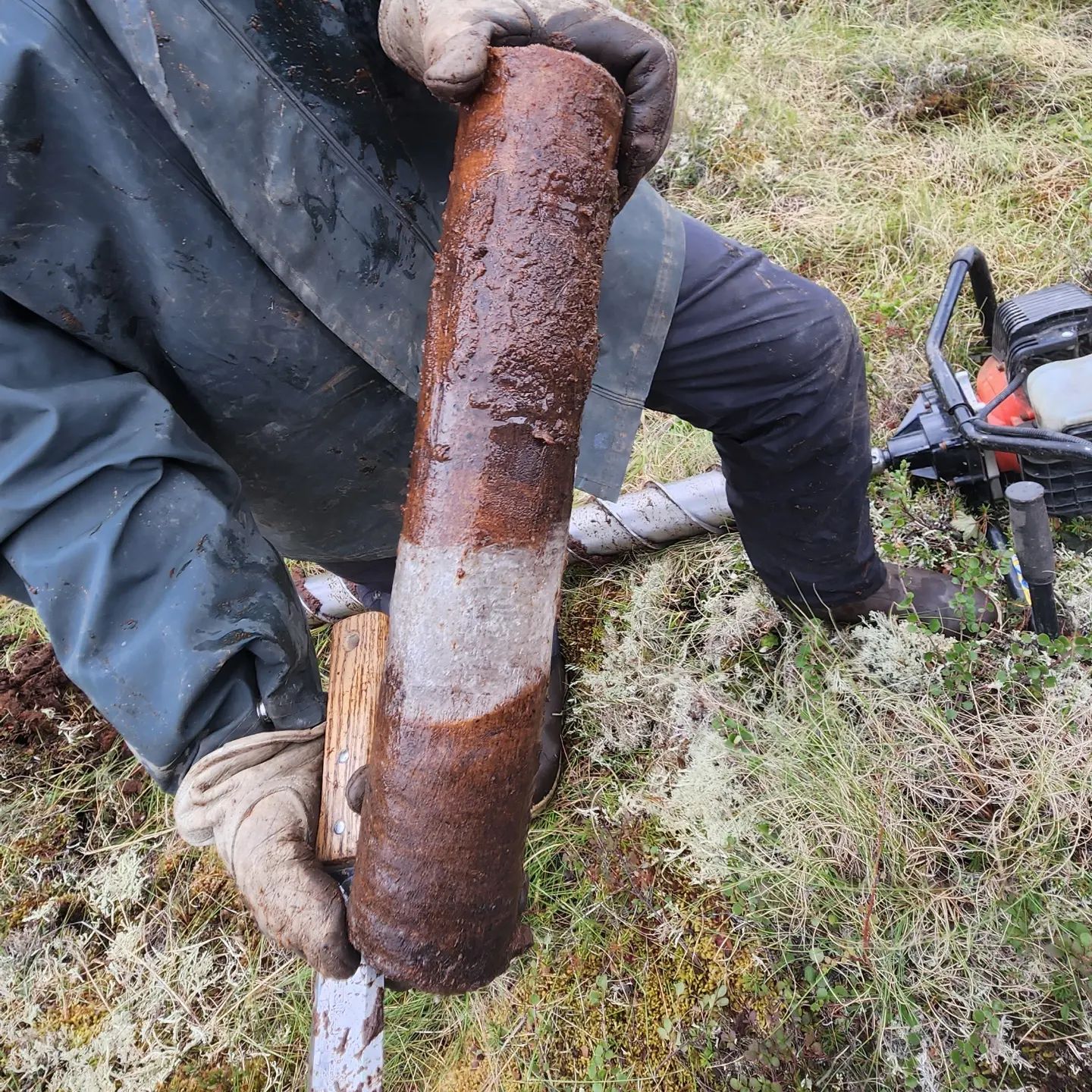
These soils, found under permafrost conditions, have unique features from the freeze-thaw cycles. They are quite challenging to build on, but interestingly, can have organic accumulations due to slow decomposition.
Cold temperatures are the most limiting factor for plant growth.
Histosol
These soils form when organic matter accumulates rather than decaying. Common areas to find them include saturated conditions, where organic matter is unable to decompose due to anaerobic conditions. Northeast Minnesota contains some of these soils, as does parts of Florida.
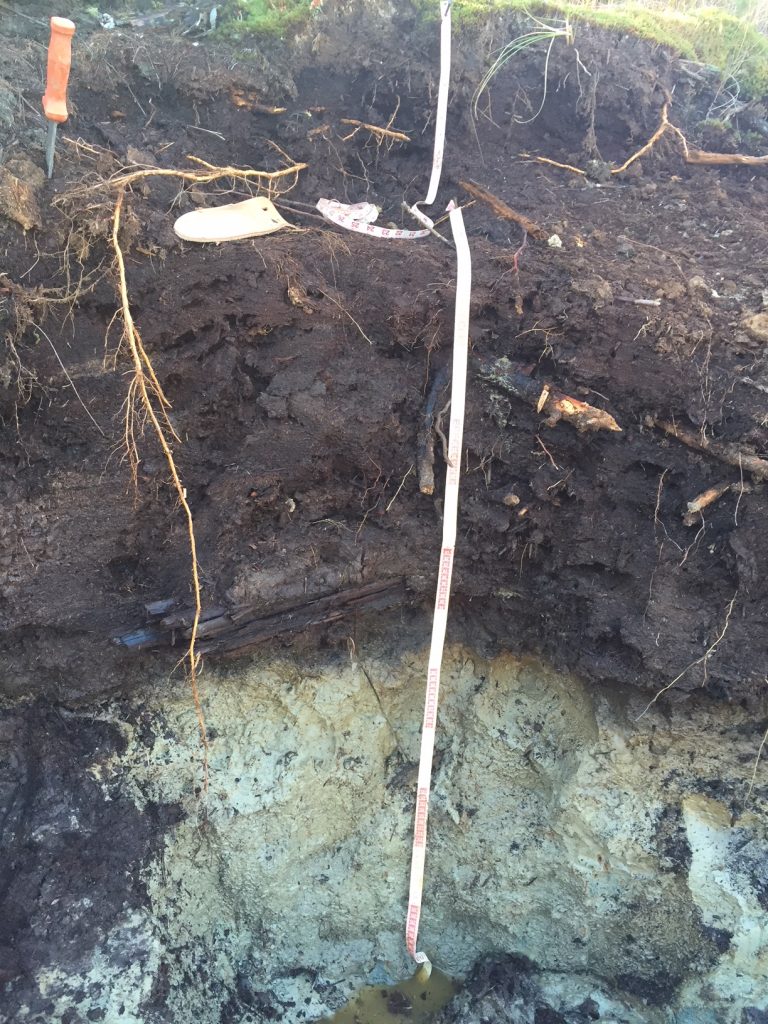
Limitations for plant growth are likely whatever is slowing organic matter decomposition, like an extremely shallow water table.
Spodisol
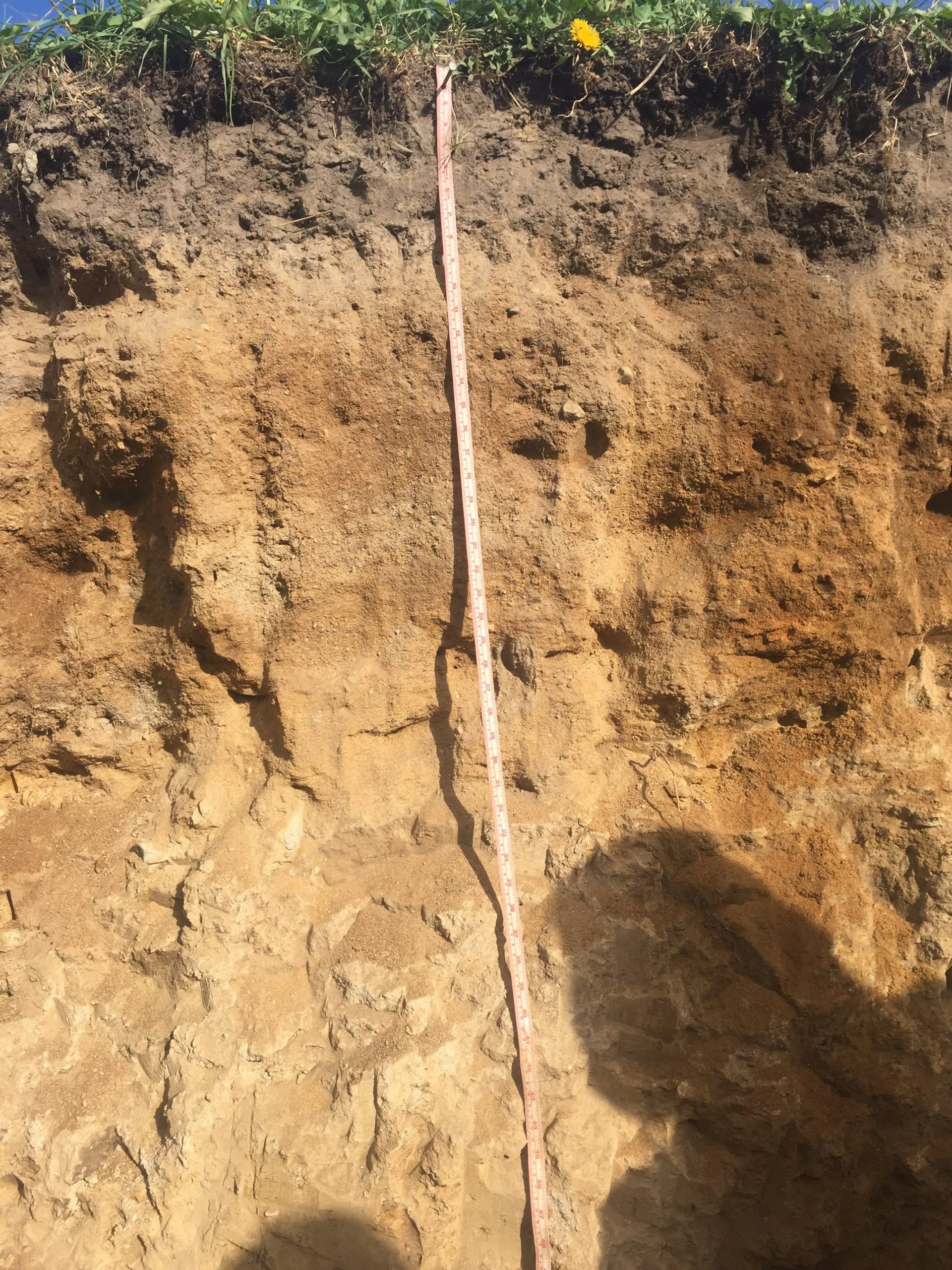
These soils are formed from organic matter complex with a metal like aluminum and move down in the profile. They are found under conditions that allow for movement-generally under acidic vegetation and sandier or coarse materials. In the US, these are found in the Northeast, Northern WI and MI, as well as parts of Florida. Challenges for management are likely fertility.
Andisol
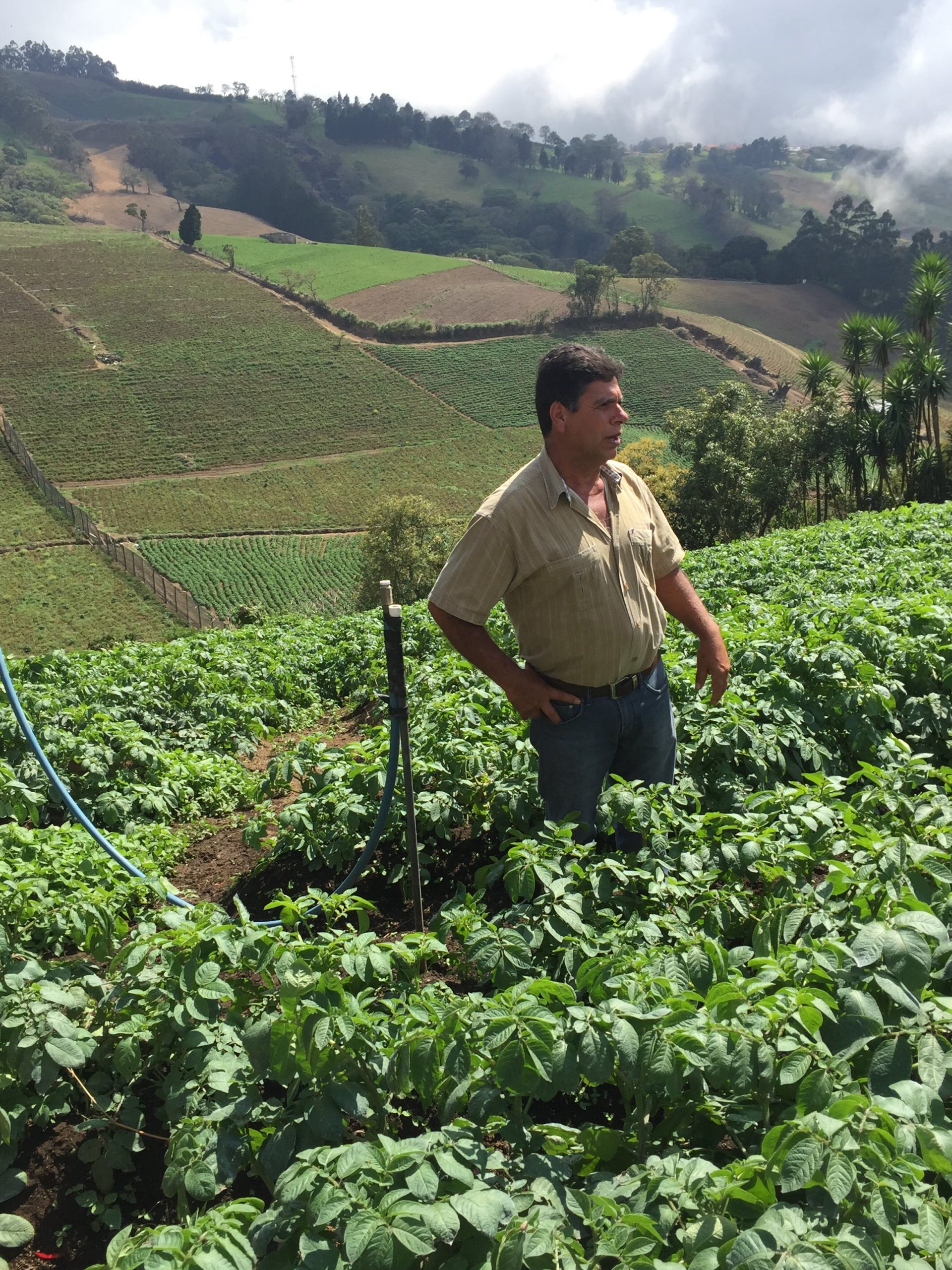
These soils are derived from volcanic ash, giving them unique structural and chemical properties. They are quite stable (see farm in picture found in Costa Rica), until saturated. The amorphous crystal structure also changes chemical and physical properties. In the US, these are found in the Pacific Northwest.
Oxisol
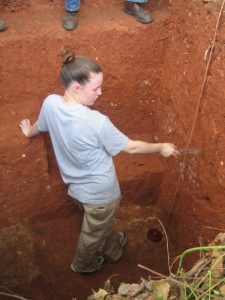
Deeply weathered and dominated by iron and other resistant minerals, these soils are only found in the most weathered conditions on Earth-near the tropics where warm and wet conditions dominate along with long-term stability in the soil surface. These soils can have meters and meters of B horizon materials, with no C or R within diggable depths. Fertility is more dependent upon the rapid decomposition of the prior crops than the soil releasing weatherable minerals.
Vertisol
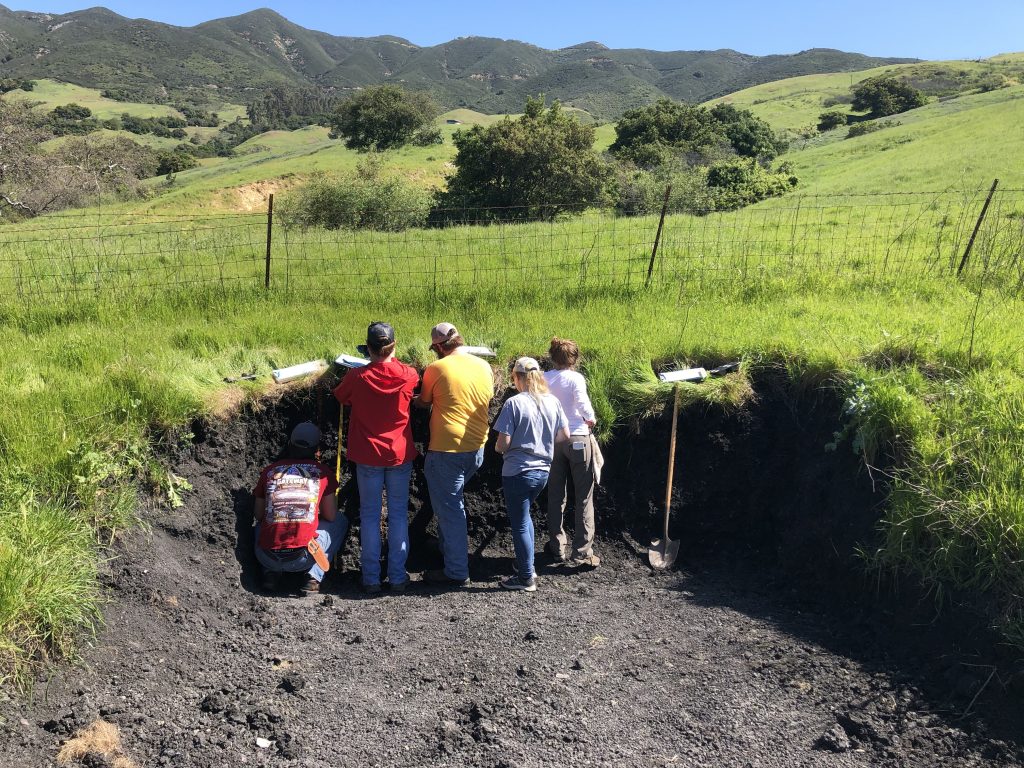
Vertisols are challenging soils to manage. Composed of high amounts of shrink-swell clays, these soils crack when dry, and swell up when wet. This can crack roads or foundations built upon these soils without proper precautions. Fenceposts in the picture are tilted, in spite of it being a recent installation. Field operations have a narrow window between too wet and too dry. If excavating, these are also unstable, so should be shallow with wide access.
Aridisol
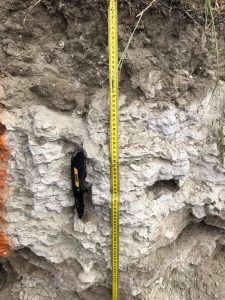
These are soils in arid conditions that contain developed features (not shifting sands). The low rainfall means materials can accumulate, such as the significant amounts of calcium found in this example. Water is the primary limiting factor for plant growth in these soils. In the US, these are found in the Southwest.
Ultisol
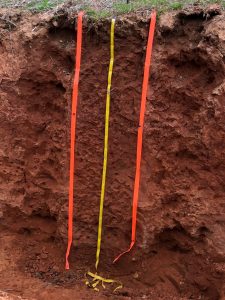
These are highly weathered soils, but not to the extent found in the tropics. They have low base saturation (associated with low fertility) and have many of their weatherable minerals removed. In the US, these are found dominantly across the Southeastern states.
Mollisol

These soils are characterized by the depth and color of the A horizon, as an indicator of organic matter accumulation. Found dominantly under areas with prairie as their native vegetation, these soils are generally quite fertile. Limiting factors for crop growth may be wetness or limited growing season. Across the US, these are found across the great plains region. In most cases, 25 cm of colors with value and chroma 3 or less are required, along with high base saturation.
Alfisol
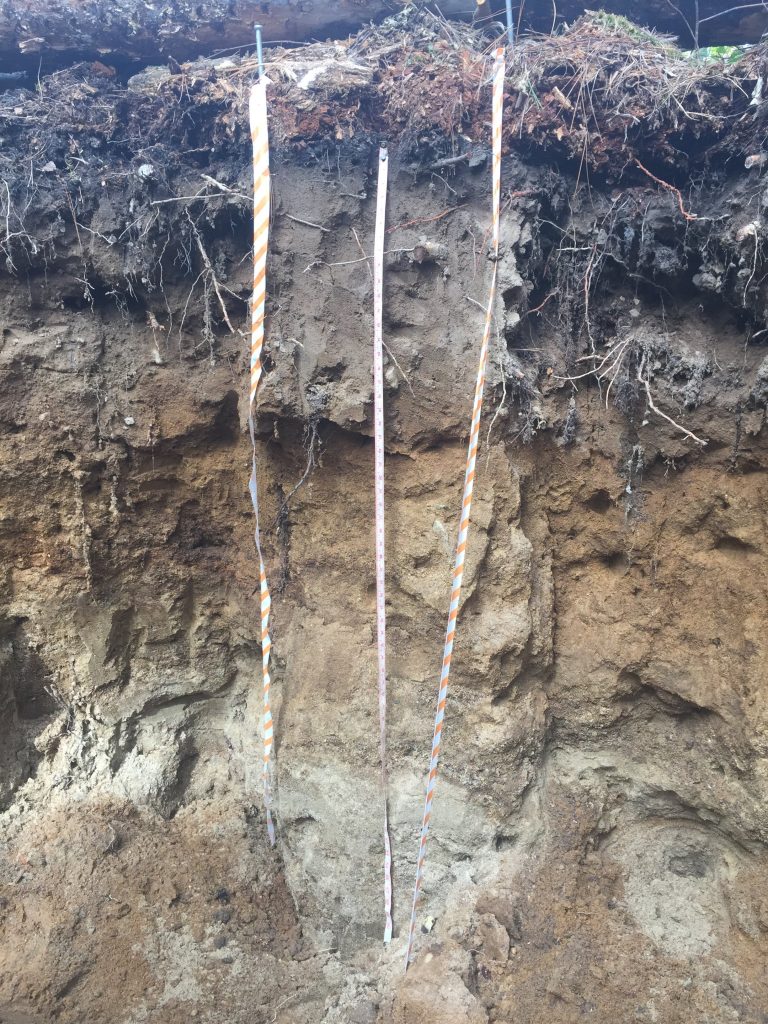
These soils generally have a Bt horizon, but still a high base saturation, generally associated with higher fertility. They generally have an E and Bt horizon, indicating a movement of clay from the upper portion to the lower.
If under an established forest, they may also have an O horizon.
Inceptisol
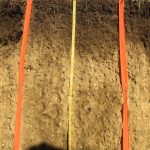
These soils are young, but show some development. They normally have an A-Bw-C or similar horizonation, showing weak development in the lower profile. These may be found on stream terraces, where soils are fairly young, but no longer being flooded. They also may be found in areas that lack sufficient rainfall, time, or temp to have changed the soil from the time of the last deposit.
Entisol
These are underdeveloped soils. Recent deposition or instability mean that the soil hasn’t had enough time to change since deposition. These are common along flood plains, and can be found in other unstable areas, where erosion or deposition has removed the prior soil horizons.

These materials are relatively unchanged since deposition. Photo Credit: Amber Anderson
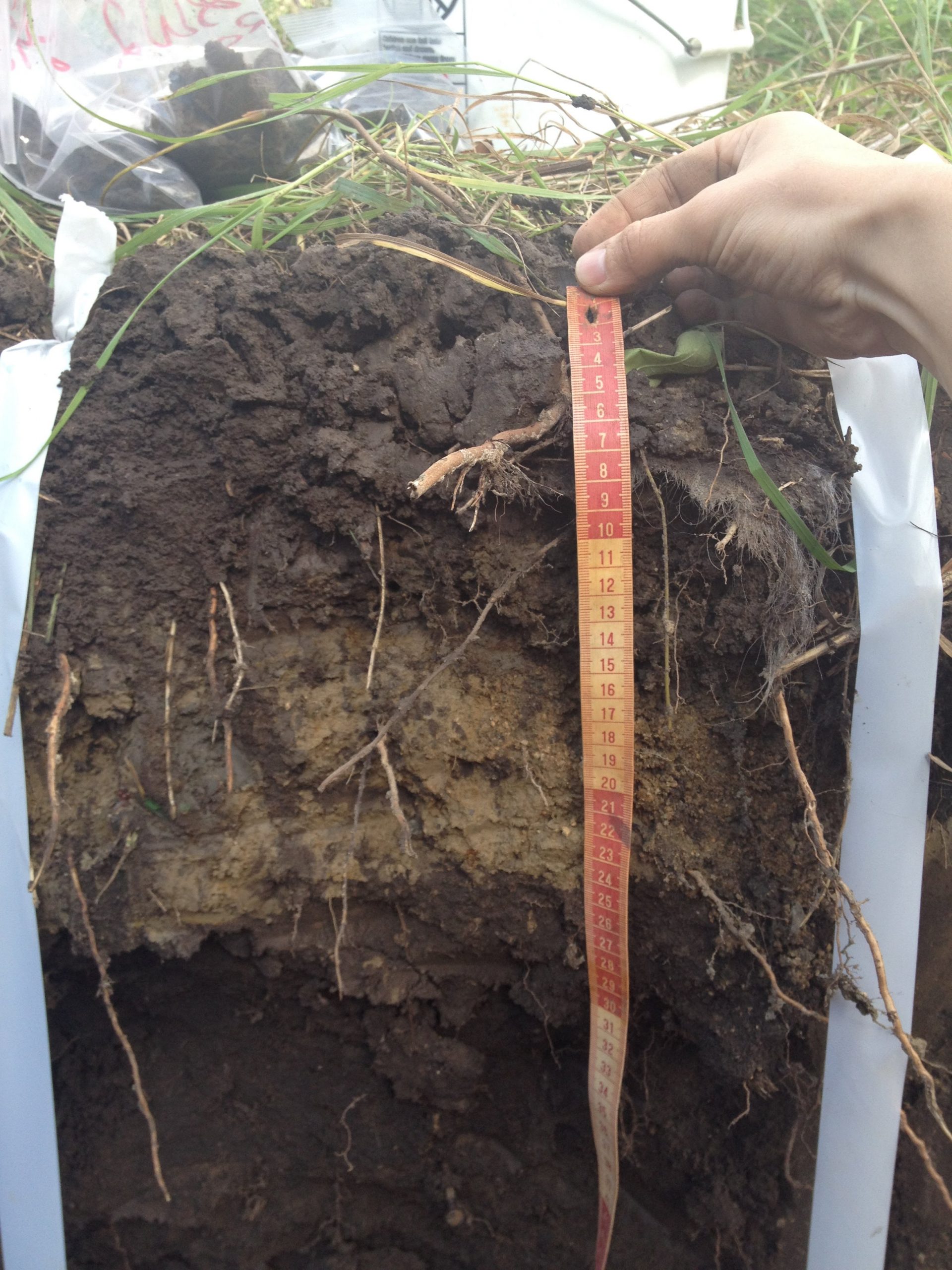
- 12 major soil orders exist in the US system of soil taxonomy, by either degree of development or special cases
- These broad categories are based upon degree of weathering (change from when deposited) or special circumstances.
- https://www.nrcs.usda.gov/resources/education-and-teaching-materials/the-twelve-orders-of-soil-taxonomy ↵

